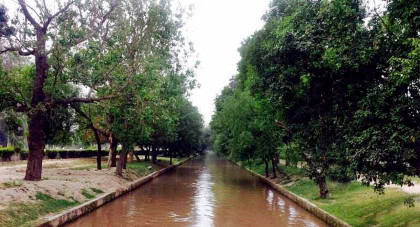Senior Provincial Minister Maryam Aurangzeb has stated that under Chief Minister Maryam Nawaz Sharif’s Green Punjab Mission, a comprehensive and historic tree plantation campaign has been launched to combat smog and the adverse effects of climate change.
Over the past year, more than 13 million trees have been planted as part of efforts to eliminate smog. For the fiscal year 2025–26, a target has been set to plant a total of 51 million trees—marking the largest forest coverage initiative in the country’s history.She emphasized that the fight against smog is not seasonal but rather a long-term effort backed by systemic reforms and a declared environmental emergency. As part of this commitment, a target of 34.2 million trees has been set under the “Plant for Pakistan” initiative, covering 41,345 acres of land. Additionally, the scope of the Green Pakistan Program has been expanded, with over 15 million trees being planted across 18,385 acres.
Tree plantation is also underway along 3,000 kilometers of canal and roadside stretches, where 1.8 million saplings are being planted. In Murree and Kahuta, the “Shielding Summits Program” has been launched to tackle forest fires and smog, which includes the recruitment of 600 fire watchers, establishment of watchtowers, and provision of fire vehicles.A modern monitoring system utilizing GIS, drones, and satellite technology has been activated to ensure real-time detection of encroachments and fire incidents. Furthermore, 104 Forest Command and Control Centers have been established across the province to ensure round-the-clock forest monitoring.To promote eco-tourism, international-standard facilities are being developed at Lal Suhanra National Park and in the Salt Range. In addition, environmentally protected zones are being established, with the construction of LEED-certified green buildings playing a crucial role in restoring ecological balance.The process of digital tagging and GIS-based cataloging of tree plantations is underway to ensure transparency and effective planning.

















